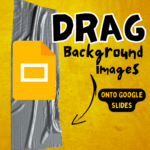
Have students make a video to show their thinking, learning, feelings, thoughts, or ideas!
Guest Blog Post by Marcia Carrillo
The “Video Secret” to student learning can be achieved by providing the opportunity of “selfie-videos.” When students are proud of something they do, they post a video and share it, snap it, tweet it to let others know! It’s their way of saying, “I’m proud of myself!” Teachers can encourage and facilitate this type of expression by creating opportunities for student clips.
Assessing learning through video is awesome, new, innovative, and relevant!
Students always enlighten me with their ideas but through videos you can hear from everyone and have evidence of student learning or areas of growth.
Students love creating with their phones, whether it be positive or negative, and some even have their own YouTube channels in hopes of becoming famous. Of course some students will not like creating videos of themselves and I would challenge them to problem solve this; be creative and allow a variety of video options throughout the year. One option is having students create one with a partner or group to get them started.
Creating short, 30-60 second videos is engaging, powerful and requires technology skills that students have or secretly desire. Video is engaging and informative because we can see it, feel it & hear it!
A video can be used as a quick form of assessing student learning and may be a popular choice with some students. They force students to be more articulate and accurate, and use academic language and tone to address the topic. Exit tickets, warm-ups, Google questions, a poll, explanations, feelings about a question, and a project reflection are all examples of activities in which teachers can offer the choice of using student videos! There are a variety of options for students and with practice, it can be faster than typing a response. Alice Keeler’s Video WebCam record, ScreenCastify, GovideoVinyard, Adobe Spark, and FlipGrid are all options for students to use. I recommend letting them practice with a variety of video tools. It’s an easy way to provide students with a choice, and it helps them see how may of these tools are available.








